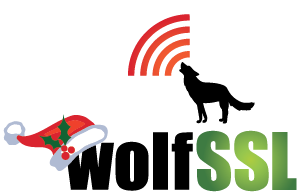We’ve got an exciting new update for our Apple ecosystem support! wolfSSL now contains a script that automates building and packaging wolfSSL static libraries as an XCFramework that can run on all Apple platforms and targets, further simplifying integration into your Xcode projects. Instead of manually adding all wolfSSL source files to your Xcode project […]
Read MoreMore TagCategory: Uncategorized
How and why to use ECH (Encrypted Client Hello)
In early 2023 wolfSSL added support for the Encrypted Client Hello draft extension for TLS 1.3 (formerly known as Encrypted Server Name Indication(ESNI)). The Encrypted Client Hello (ECH) extension encrypts the client_hello message meant for a TLS 1.3 server and sends it as an extension of an outer client_hello that has the sensitive fields removed. […]
Read MoreMore TagwolfSSHd Works on Windows!
Did you know that the recent SSHd addition to wolfSSH has also been ported over to Windows? It can run as a service and host incoming SSH, SFTP, and SCP connections. This took some effort in the engineering department here at wolfSSL. Getting interop with clients using Linux terminals streamlined and porting over the wolfSSHd […]
Read MoreMore TagHow to build a smaller wolfSSL library when used with cURL?
The size of software builds can often be a concern for developers, particularly in embedded systems or other resource-constrained environments. Recently, a change was made to the wolfSSL library that has resulted in smaller build sizes when used with the popular cURL library. When building wolfSSL, this recent change removes the need for using –enable-opensslextra […]
Read MoreMore TagWhat Operating Systems has wolfSSL been ported to?
When embarking on a project the operating system used is a hard choice and limiting factor. Many embedded IoT projects even do without the operating system due to resource constraints. wolfSSL is a compact, highly customizable, and open-source SSL/TLS library that provides encryption, authentication, and secure communication. One remarkable feature, among many, of wolfSSL is […]
Read MoreMore TagwolfSSL Micrium Port Updated
Users of Micrium secured by wolfSSL rejoice! We recently added support for Micrium to utilize the hardware RNG of STM32 platforms. Also we updated the port to include the application configuration to take advantage of TCP IP settings in the Micrium network headers. Micrium users can take advantage of wolfSSL’s best-tested security library, including support […]
Read MoreMore TagLive Webinar: Linux Kernel Mode
Exciting news for Linux Kernel Module developers and developers who are interested in diving into Linux Kernel Module. Join us for a webinar on Linux Kernel Mode hosted by wolfSSL Engineer Daniel Pouzzner. Watch the webinar here: Linux Kernel Mode After wolfSSL 4.6.0 introduced initial support for building as a Linux kernel module, and providing […]
Read MoreMore TagwolfSSL Supports TSIP v1.17
wolfSSL 5.6.3 adds support for Renesas TSIP v1.17 and extends some of the TLS handshake operations to use this cryptographic accelerator. TSIP v1.17 adds the ability to handle CertificateVerify messages over TLS. This feature is used for both validation and generation of messages exchanged with the server. Of course, both TLS1.2 and 1.3 can handle […]
Read MoreMore TagLive Webinar: Espressif
Commercial-grade encryption tools are essential in every developer’s programming toolbox. We are excited to announce a live webinar presented by Jim aka gojimmypi, wolfSSL Engineer, where he will discuss Espressif products. Watch the webinar here: Getting Started with wolfSSL on the Espressif ESP32 Recently, we announced the first availability of the wolfSSL embedded encryption libraries […]
Read MoreMore TagwolfSSL Support for Renesas SCE Crypt Only Use
We have extended wolfSSL’s Renesas Secure Crypto Engine (SCE) support to include a crypt-only build for the Renesas RA6M4. wolfSSL already supports Renesas SCE for TLS communication. In addition to our existing TLS support, the SCE driver can be used for standalone cryptographic operations. Using this mode, users are able to gain not only the […]
Read MoreMore Tag
